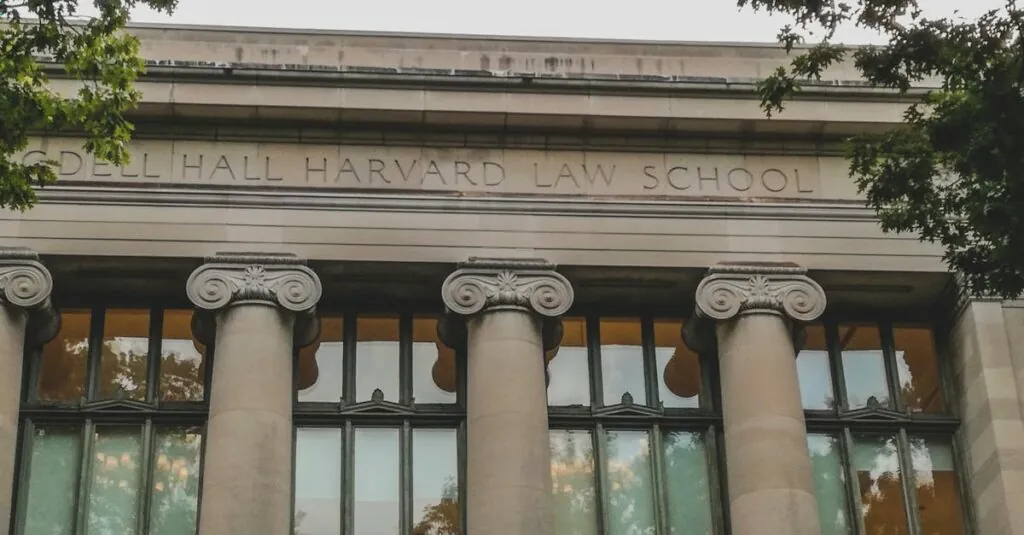Table of Contents
ToggleIn America today, public education is like that one group project where everyone has a role but no one wants to do the heavy lifting. It’s primarily the responsibility of local governments, but let’s face it, the stakes are high and the resources can be low. From funding to curriculum decisions, the burden often falls on the shoulders of school districts, teachers, and even parents who sometimes feel like they’re juggling flaming torches while riding a unicycle.
The Role of Government in Public Education
Public education in America involves various levels of government, primarily local, state, and federal, each playing a distinct role in shaping educational outcomes.
Federal Oversight
Federal oversight ensures that schools adhere to specific standards and policies. The U.S. Department of Education administers various programs, offering funding that impacts millions of students. Title I funding, for example, supports schools in low-income areas, helping to reduce inequalities. Additionally, federal initiatives such as the Every Student Succeeds Act establish guidelines aimed at improving educational quality across states. By setting accountability measures, the federal government influences curriculum and assessment standards, fostering a nationwide commitment to educational equity.
State Responsibilities
States hold significant power in shaping public education policies and practices. They establish education systems and implement various regulations regarding teacher qualifications and school funding. State legislatures determine the curriculum frameworks that school districts must follow. Furthermore, governors oversee education agencies that manage budget allocations and ensure compliance with state laws. Accountability systems at the state level assess school performance, thereby guiding improvements and fostering accountability among educators and administrators. Each state’s commitment directly impacts the quality of education students receive.
Local School Districts: Governance and Funding
Local school districts hold significant responsibility for public education in America today. Each district manages its own governance and funding, influencing how education is delivered.
Decision-Making Authority
School boards, elected by the community, serve as the primary decision-making body within local school districts. They establish policies that affect students and teachers. Curriculum choices often reflect local community values and priorities. Additionally, these boards hire superintendents who manage daily operations and implement board policies. Accountability to the community shapes decisions regarding academic standards and school performance. In turn, input from parents and stakeholders guides critical decisions, ensuring that they align with local needs.
Budget Allocations
Budget allocations represent a critical challenge for local school districts. Funding often originates from local property taxes, state allocations, and federal resources, creating variability in financial support. Each district crafts its budget to address operational costs, staff salaries, and program enhancements. Funding disparities between affluent and less affluent districts can widen educational inequalities. Consequently, strategic allocation of funds plays a vital role in determining the resources available for classrooms, extracurricular activities, and support services. School districts often prioritize spending based on immediate community needs, balancing quality education with financial realities.
The Impact of Community Involvement
Community involvement significantly influences the quality of public education in America. Engaged communities tend to support schools more effectively through various initiatives.
Parental Engagement
Parental engagement plays a critical role in student success. Parents who actively participate in school activities foster positive relationships with teachers. This connection enhances communication and promotes a shared commitment to student achievement. Research indicates that students with involved parents often perform better academically. Their understanding of the curriculum also improves, benefiting their educational experience overall. Schools encourage parent-teacher meetings, workshops, and volunteering opportunities to strengthen this involvement.
Local Organizations and Support
Local organizations provide essential support to public education. They often collaborate with schools to offer resources and funding for programs. Community groups, non-profits, and businesses contribute by organizing tutoring services and extracurricular activities. These collaborative efforts create an enriched educational environment, addressing diverse student needs. Partnerships with local organizations also help schools access materials and information that enhance learning. Involvement from these entities is vital to bridging gaps in funding and resources within local education systems.
Challenges Facing Public Education Today
Public education encounters significant challenges that affect its effectiveness. Issues like funding inequities and necessary policy reforms hinder the quality of education across the nation.
Funding Inequities
Funding inequities represent a major challenge in public education. Schools often receive financial resources based on local property taxes. Areas with higher property values generate more funding, while less affluent communities struggle with inadequate resources. This disparity results in stark differences in educational quality. For instance, wealthier districts may afford advanced technology and extracurricular programs, whereas underfunded schools face overcrowded classrooms and outdated materials. When schools lack equal access to funding, students in poorer districts are at a disadvantage, impacting their educational outcomes significantly.
Policy Changes and Reforms
Policy changes and reforms also present obstacles to public education. Federal and state governments regularly implement new regulations, often without adequate input from local educators. These policies can shift funding priorities, affecting school budgets and resources. For example, recent reforms focused on standardized testing have placed additional pressure on teachers and students. When schools prioritize compliance over innovation, the learning environment may suffer. Engaging educators in policymaking can lead to more effective reforms that directly address the challenges faced by schools and their communities. Prioritizing collaborative approaches ensures that policies reflect the actual needs of students and teachers.
Public education in America today is a complex landscape shaped by various stakeholders. Local governments are at the forefront of responsibility but often struggle with limited resources and high stakes. The involvement of state and federal entities adds layers of oversight and funding, yet disparities persist between affluent and underfunded districts.
Community engagement remains crucial for enhancing educational quality. Active participation from parents and local organizations can bridge gaps and support schools effectively. As challenges like funding inequities and policy reforms continue to arise, a collaborative approach among all parties involved is essential for creating a more equitable and effective public education system. The future of education depends on shared responsibility and commitment from everyone involved.




